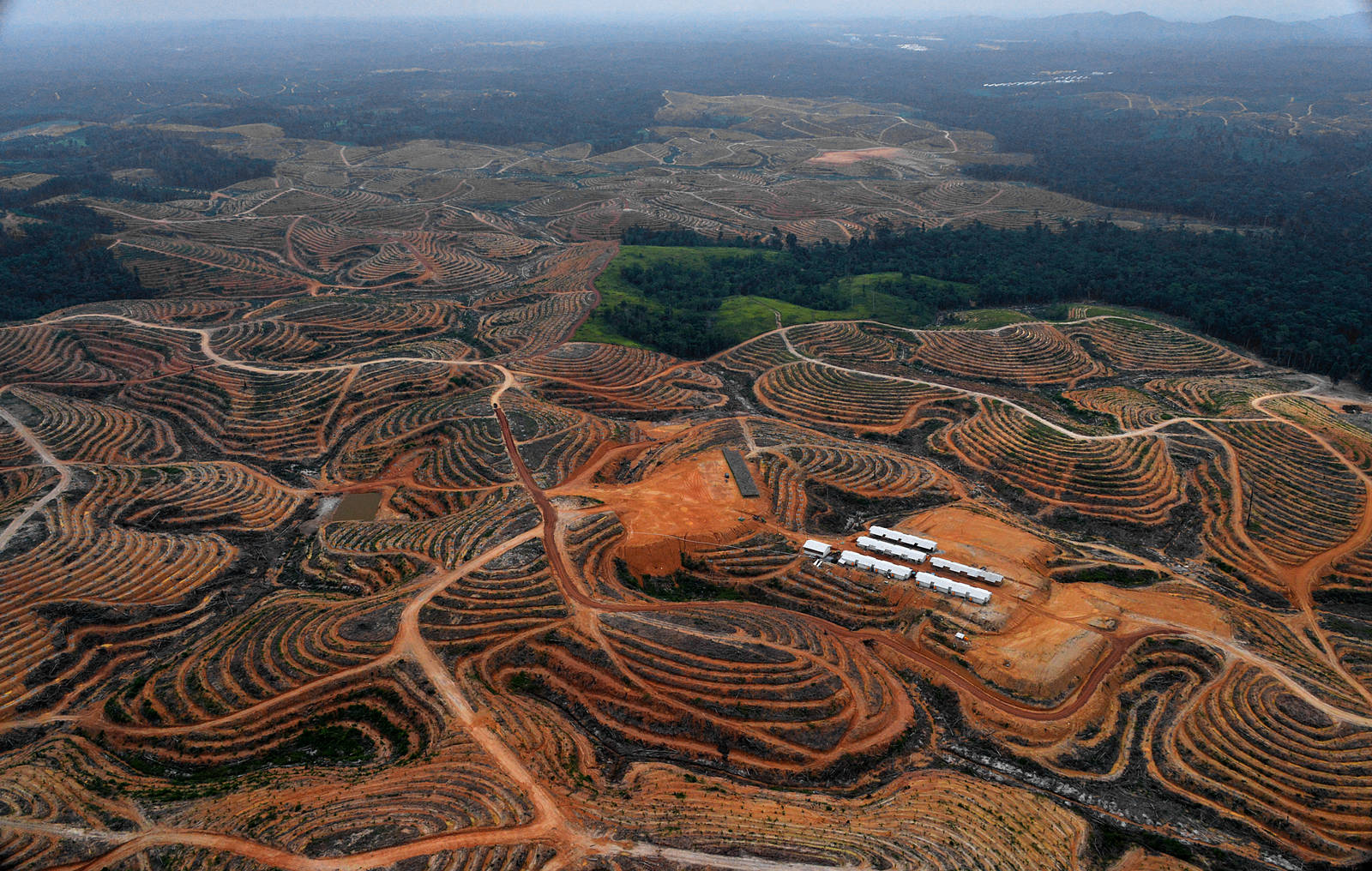In today’s world, the cry for renewable energy sources grows louder every day, and bamboo is heeding that call. A new study by the Hungarian University of Agriculture and Life Science is shining a beacon of hope by highlighting the potential of bamboo in revolutionizing the renewable energy sector.
This remarkable research delves deep into the often-overlooked attributes of bamboo, building an impressive case for its use as a green alternative to traditional fossil fuels.
“The bamboo plant is an exceptional marvel of nature,” the researchers point out.
Why bamboo may revolutionize the renewable energy sector
With a growth rate that exponentially faster than most other plants, bamboo is a rapidly renewing resource. It is also a vital cog in the fight against climate change.
Acting like a super sponge for carbon dioxide, this unassuming plant significantly contributes to reducing greenhouse gas emissions.
But the heroics of bamboo don’t stop there. This plant also gives back generously to the planet by releasing abundant amounts of oxygen into our atmosphere. Bamboo actually refreshes the very air we rely on to survive.
With these characteristics, bamboo has the potential to take the lead in our quest for cleaner, more sustainable energy sources, the researchers claim.
How the study was conducted
The study takes a leap into the technicalities of unlocking bamboo’s full energy potential. It uncovers how researchers have transformed raw bamboo material into bioenergy products, including bioethanol and biogas, through advanced techniques like fermentation and pyrolysis.
However, harnessing the bioenergy potential of bamboo isn’t a straightforward path. The study emphasizes the importance of choosing the correct species of bamboo for the most effective energy production.
“Different bamboo species have variations in their chemical composition,” the researchers explain. As such, gathering extensive and precise data is critical in maximizing bamboo’s renewable energy potential.
Closer look needed into efficiency of bamboo biomass
Further, the research offers valuable knowledge about different types of bamboo and their unique morphological characteristics. These are all essential factors in bamboo bioenergy production. The authors propose an evaluation system that would optimize the utilization efficiency of bamboo biomass energy.
According to the study, the key to maximizing the benefits of bamboo lies in pairing the specific attributes of each species with suitable bioenergy production methods.
This ground-breaking research, published in GCB Bioenergy, uncovers the immense potential of bamboo as a sustainable source of energy. It is a testament to the untapped treasures of the natural world and a promising stride towards a cleaner, greener future.
More about bamboo plants
Bamboo, a versatile plant belonging to the grass family Poaceae, is renowned for its extraordinary growth rate and myriad uses. This plant, found in diverse climates ranging from cold mountains to hot tropical regions, is incredibly adaptive and resilient, proving vital for both the environment and human economies.
Scientific Classification
Bamboo is part of the subfamily Bambusoideae within the grass family Poaceae. There are approximately 1,500 different species of bamboo, distributed among 115 genera. Some of the most well-known genera include Phyllostachys, Bambusa, and Dendrocalamus.
Physical Characteristics
Bamboo, being one of the most distinctive and versatile plant species on the planet, showcases some unique physical characteristics:
Culms
One of the most noticeable features of bamboo is its tall, hollow stem, known as a culm. These cylindrical structures are segmented by distinct nodes, giving bamboo its characteristic appearance. The culms of a bamboo plant can vary widely in size, with heights reaching up to 30 meters in some species, while others remain relatively short and shrub-like.
Nodes and Internodes
The culms are segmented by solid nodes, with hollow internodes between them. The nodes often give rise to branches and leaves, and in some species, adventitious roots may develop.
Color
The color of bamboo culms can vary from species to species, ranging from green to golden, and in some rare instances, striped or even black.
Leaves
Bamboo leaves are generally lanceolate (lance-shaped) or linear and display a wide range of sizes and shapes depending on the species. The leaves grow alternatively along the branches.
Branches
Most bamboo species produce multiple branches from the nodes of their culms. These branches further produce leaves and sometimes smaller branches, resulting in a dense, bushy appearance.
Root System
Bamboo plants have a complex and extensive root system, characterized by underground stems called rhizomes. These rhizomes help the plant spread rapidly, making bamboo an effective colonizer.
Flowers and Seeds
Interestingly, bamboo plants flower infrequently. Some species flower at intervals as long as 60 to 120 years, a phenomenon known as “gregarious flowering.” When bamboo plants do flower, they produce seeds, which can give rise to new plants.
Shoots
Young bamboo plants, or shoots, start as small, conical structures that can rapidly grow to reach their full height within a single growing season.
In sum, the physical characteristics of bamboo are unique and varied across different species, contributing to the plant’s adaptability and usefulness.
Habitat and Distribution
Bamboo is a versatile plant that thrives in a variety of climates and habitats across the globe. Its distribution is widespread, primarily due to its adaptability to diverse environmental conditions.
Asia
The most significant concentration of bamboo species can be found in Asia, which is often considered the plant’s traditional home. Countries like China, India, Japan, and Indonesia boast extensive bamboo forests. Bamboo is integral to the region’s ecology, culture, and economy, serving as a material for construction, a source of food, and a symbol in art and mythology.
Americas
In the New World, bamboo is native to regions spanning from the southern United States to Chile in South America. The American bamboo species are mostly found in tropical and subtropical regions, with significant populations in countries such as Brazil, Mexico, and Argentina.
Australia
The Australian continent is home to a variety of bamboo species, predominantly in its northern and eastern regions. Bamboos here thrive in tropical and subtropical rainforests.
Africa
Bamboo also grows in various parts of Africa, predominantly in the highlands of East Africa and the mountains of Madagascar.
Europe
Although native bamboo species are rare in Europe, some types, especially from the genus Phyllostachys, have been introduced and naturalized in certain areas.
In terms of habitat, bamboo is adaptable to a wide range of conditions. It can grow in mountainous regions, thriving at altitudes of up to 4,000 meters in the Himalayas.
Conversely, it also flourishes in lowland tropical regions, such as rainforests and wetlands. Bamboo can grow in both wet and dry soils, although it generally prefers well-drained soils.
This broad distribution and habitat diversity highlight bamboo’s remarkable adaptability and resilience. However, the greatest species diversity is still found in the tropics and subtropics, where conditions are most favorable for their growth.
Growth and Reproduction
Bamboos are unique in the plant world for their growth pattern. They experience a rapid growth spurt, where they achieve their full height in a single growing season without further vertical growth in subsequent years. Instead, the plant focuses on growing thicker and denser in subsequent years, enhancing its strength.
Bamboo plants typically reproduce in two ways: vegetatively and through seeds. Vegetative propagation is the most common, with new plants emerging from the parent plant’s underground rhizomes. Seed propagation occurs after the bamboo plant flowers, which, depending on the species, may happen only once in many decades.
Ecological Importance
Bamboo plays an incredibly vital role in the ecosystem, offering various ecological benefits.
Carbon Sequestration
One of bamboo’s most important ecological contributions is its ability to absorb carbon dioxide from the atmosphere and store it within its biomass – a process known as carbon sequestration. Bamboo sequesters carbon at a much faster rate than many other tree species due to its rapid growth.
Oxygen Production
As part of the photosynthesis process, bamboo releases substantial amounts of oxygen into the atmosphere. This oxygen release is reported to be 35% more than that of an equivalent stand of trees, enhancing air quality and contributing to the overall health of the planet.
Soil Conservation
Bamboo’s extensive root system helps bind the soil, preventing erosion and landslides. This is particularly beneficial in areas prone to such natural disasters or in regions suffering from soil degradation.
Water Regulation
Bamboo plays a crucial role in water management. Its root system helps regulate the water cycle by reducing runoff, thereby increasing water availability in the dry season and reducing the impact of floods in the rainy season.
Habitat for Wildlife
Bamboo forests provide valuable habitats and food sources for a variety of wildlife species. This includes the critically endangered Giant Panda, which relies heavily on bamboo for its diet, as well as numerous species of birds and insects.
Biodiversity
Bamboo’s ability to grow in a variety of habitats contributes to biodiversity. Its presence can help support a wide array of plant, animal, and microbial life, enhancing the richness and resilience of ecosystems.
Post-Disturbance Regeneration
Bamboo often plays a crucial role in the natural regeneration of vegetation after disturbances such as landslides or fires. Its fast growth rate allows it to colonize such areas quickly, paving the way for the return of other plant and animal species.
In conclusion, the ecological importance of bamboo cannot be overstated. It contributes significantly to carbon sequestration, oxygen production, soil and water conservation, biodiversity, and habitat provision. As such, it plays a vital role in maintaining the health and balance of many ecosystems worldwide.
Human Uses
Bamboo has been a staple for many cultures around the world, particularly in Asia. Its uses are diverse, ranging from construction material and paper production to food sources and ornamental gardening.
The strength and flexibility of bamboo culms make them ideal for constructing houses, bridges, and furniture. Its shoots are a popular ingredient in many Asian cuisines, while its leaves are often used in traditional medicine.
Bamboo as a Renewable Energy Source
Research has highlighted bamboo’s potential as a renewable energy source. Techniques like pyrolysis and fermentation can convert bamboo’s raw material into bioethanol and biogas. With proper species selection and processing, bamboo biomass can offer a sustainable and eco-friendly alternative to fossil fuels.
Conclusion
Bamboo’s versatility, resilience, and fast growth rate highlight its importance as a plant species. Its ecological benefits, along with its potential as a renewable energy source, place bamboo at the forefront of sustainable solutions for the future. As we continue to understand and harness the power of bamboo, it promises to play an increasingly vital role in global ecosystems and economies.




